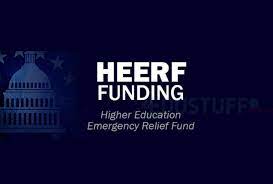The Higher Education Emergency Relief Fund (HEERF) is a national program established in response to the COVID-19 pandemic to provide emergency funds to educational institutions.
This assistance aims to offer financial support to educational systems during the pandemic, with schools being responsible for distributing the funds to students. Since its inception in 2020, the program has undergone three funding phases: HEERF I, HEERF II, and HEERF III.
On July 13, 2022, the final disbursement of $1.98 million was made under HEERF III, officially concluding the financial aid provided by the program.
These grants range from approximately $150 to $900 for the summer 2022, fall 2022, and spring 2023 terms, based on students’ financial needs and the number of courses they are enrolled in for each semester. Participants who remain enrolled may be eligible for a second matching grant.
The Higher Education Emergency Relief Fund grants were allocated to educational institutions facing financial challenges due to the COVID-19 pandemic. According to federal regulations, schools are expected to use these grants to address students’ essential needs.
Recipients of financial assistance through this program can use it for necessities like housing and food, as well as educational costs such as tuition.
The majority of HEERF funding was directed towards minority-serving institutions (MSIs), historically Black colleges and universities (HBCUs), community colleges, rural colleges, and institutions serving a significant number of low-income students.
If your institution has previously received HEERF funding, there is a possibility that there are still funds available to distribute, regardless of whether you have previously received an emergency grant from the program. It’s recommended to check with your school’s financial aid office, as some institutions may have depleted their HEERF funds.
HEERF grants are accessible to various groups, including U.S. citizens, legal residents, foreign students, refugees, asylum seekers, DACA recipients, and other undocumented students in similar circumstances. Although specific criteria may vary by school, students with the greatest financial need and those who faced unexpected financial challenges due to the pandemic are among those eligible to apply.
Eligibility Requirements for HEERF Grant
The overall entry requirements for these funds are as follows:
- Students should be signed up in classes during the term for which financial resources are available.
- Students should first fill out the Free Application for Federal Student Aid (FAFSA) (FAFSA)
- Students “expected family contribution” (EFC) should be less than $6,207.
- Expected to meet federal standards for acceptable student achievement.
How to Apply for HEERF Grant
The procedure to apply for HEERF financial assistance is determined by each individual school. Some schools require applicants to have completed the Free Application for Federal Student Aid (FAFSA), which helps them identify students with financial needs.
In certain cases, you might also need to submit a request for a student emergency fund or a similar application to your school’s financial aid office.
Once your application is reviewed and approved, you will receive notification through your school email or student portal. However, the specific communication method can vary depending on the school. To confirm the status of your application, it’s advisable to get in touch with your school’s financial aid office or check your online student portal.
Conclusion
In December of 2020, the Consolidated Appropriations Act was given the green light by Congress and received the final approval from President Trump. Within this legislation, a specific component was the advancement of the Higher Education Emergency Relief Fund (HEERF). This fund was designed to provide financial support to educational institutions, enabling them to provide urgent financial assistance to students who have been negatively affected by the disruptions caused by the COVID-19 pandemic.
